Product
Firmness
Score
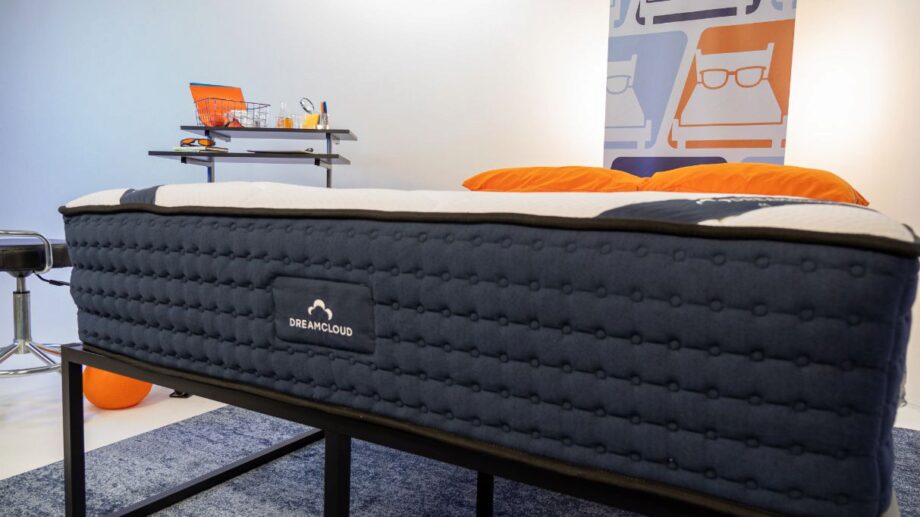
Product
Firmness
Score
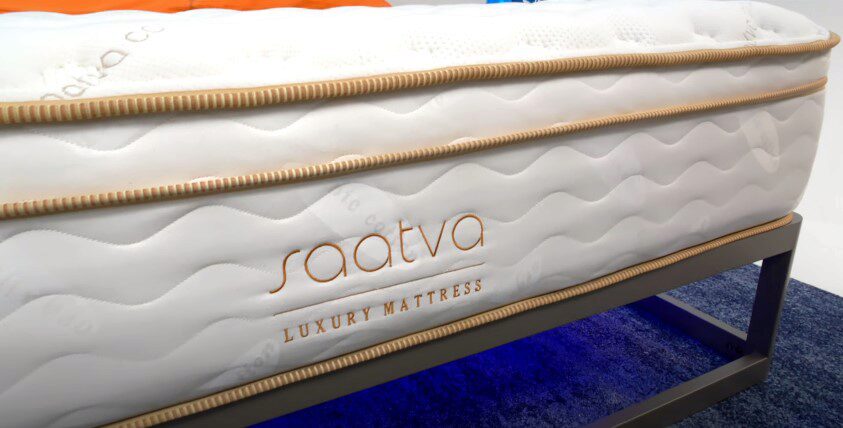
Disclosure: By clicking on the product links in this article, Mattress Nerd may receive a commission fee at no cost to you, the reader. Read full disclosure statement.
The DreamCloud and Saatva mattresses are both hybrid beds that are great for back sleepers. However, the DreamCloud is a thicker, more foam-based bed, while the Saatva uses more responsive pocketed coils. Read on to see which bed is right for you!
For more information on how we test, review, and score mattresses, check out our testing methodology.


The DreamCloud mattress offers excellent motion isolation for light sleeping couples along with plenty of support and cushion for heavyweight back and side sleepers. That said, the Saatva’s less dense construction is ideal for hot sleepers, and its edge support is outstanding too.
|
DreamCloud is best for… |
Saatva is best for… |
|
Couples |
Hot sleepers |
|
Heavyweight back sleepers |
Seniors |
|
Heavyweight side sleepers |
Lightweight side sleepers |
Want to see for yourself how these mattresses stack up? Join Loren and Corey in the Nerd Lab to learn more:

We’ve covered the basics of the DreamCloud and Saatva mattresses, but let’s take a closer look at how they feel:
Most mattresses are measured by a firmness scale that ranges from 1–10. A marshmallow-soft mattress would be close to 1/10 on the scale, while a tabletop-firm mattress would fall closer to 10/10. Generally, those with heavyweight body types perceive the average mattress to be softer, while those with lightweight body types say they feel firmer.
In this mattress comparison, both the Saatva mattress and DreamCloud measure in at a 6.5/10, but the Saatva also includes a softer option at a 3/10 firmness, and an extra firm option at 8/10 firmness.
The DreamCloud and Saatva mattresses are comparable in terms of firmness, but the DreamCloud bed has a more cushioned and denser feel, while the Saatva is thinner and more lifted. This makes the DreamCloud best for sleepers wanting pressure relief and the Saatva best for combination sleepers.
The Saatva and DreamCloud mattress perform similarly for different types of sleepers; however, the DreamCloud’s thicker layers offer support for heavyweight back sleepers and side sleepers. On the other hand, the Saatva’s more lifted feel is great for stomach sleepers of all sizes.
DreamCloud Performance By Body Type & Sleeping Position:
|
Body Type: |
BACK SLEEPERS |
STOMACH SLEEPERS |
SIDE SLEEPERS |
|
Lightweight (< 130 lbs): |
5 |
5 |
2 |
|
Average-weight (130–230 lbs): |
5 |
5 |
3.5 |
|
Heavyweight (> 230 lbs): |
5 |
2 |
4 |
Saatva Performance By Body Type & Sleeping Position:
|
Body Type: |
BACK SLEEPERS |
STOMACH SLEEPERS |
SIDE SLEEPERS |
|
Lightweight (< 130 lbs): |
5 |
5 |
3 |
|
Average-weight (130–230 lbs): |
5 |
5 |
4 |
|
Heavyweight (> 230 lbs): |
4 |
3 |
4 |
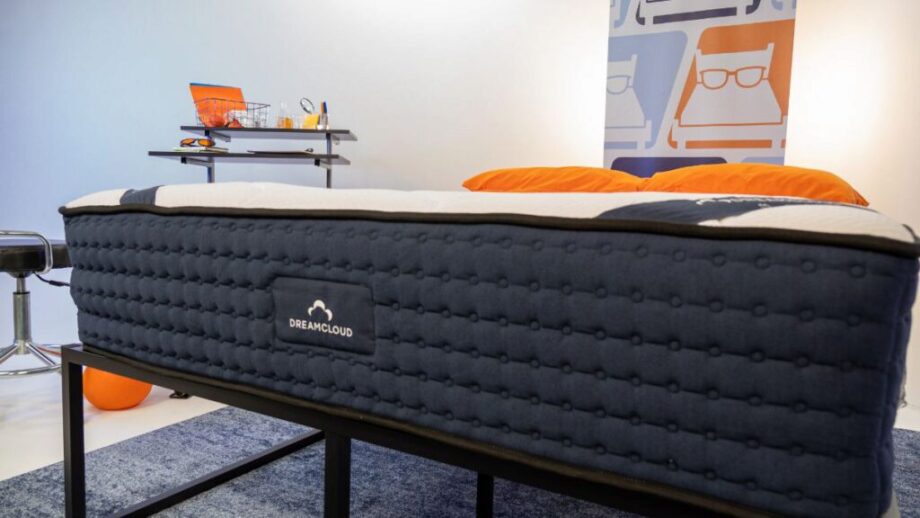
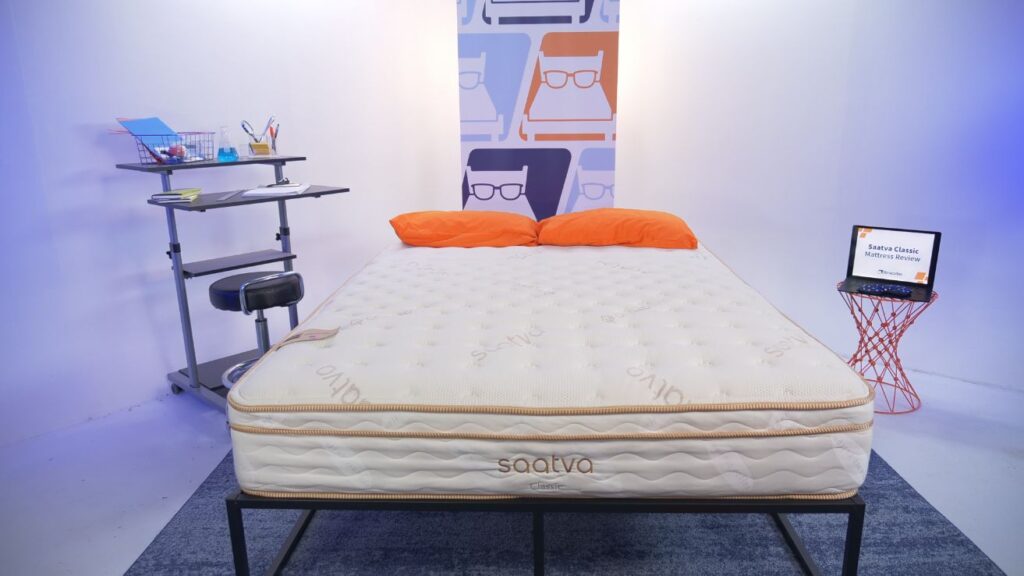
The DreamCloud and Saatva perform identically for average-weight back sleepers and stomach sleepers, but side sleepers will find that the Saatva offers slightly better support than the DreamCloud. For back and stomach sleepers, however, either mattress will work great.
Heavyweight sleepers tend to need more support. With that in mind, the heavyweight back sleepers will want to go with the denser and more cushioned DreamCloud, while stomach sleepers will prefer the more firm and lifted Saatva. For heavyweight side sleepers, either mattress should give a solid balance of support and pressure relief.
On the other hand, lightweight sleepers need the most pressure relief and the least firmness. So, back sleepers and stomach sleepers should be able to get plenty of support from either mattress, while side sleepers will want to go with the more supportive Saatva bed.
Both the DreamCloud and Saatva are hybrid mattresses that feature euro top comfort layers. That said, the DreamCloud has a thicker, more foam-based construction that’s 15” tall, while the Saatva’s thinner, more breathable design is 11.5” to 14” thick depending on firmness.
|
DreamCloud Mattress Materials |
Saatva Mattress Materials |
|
Euro Top |
Organic Cotton Cover |
|
Gel Memory Foam |
Euro Top |
|
Supportive Transition Foam |
Pocketed Coils |
|
Pocketed Coils |
Steel Coils |
| Support Foam |
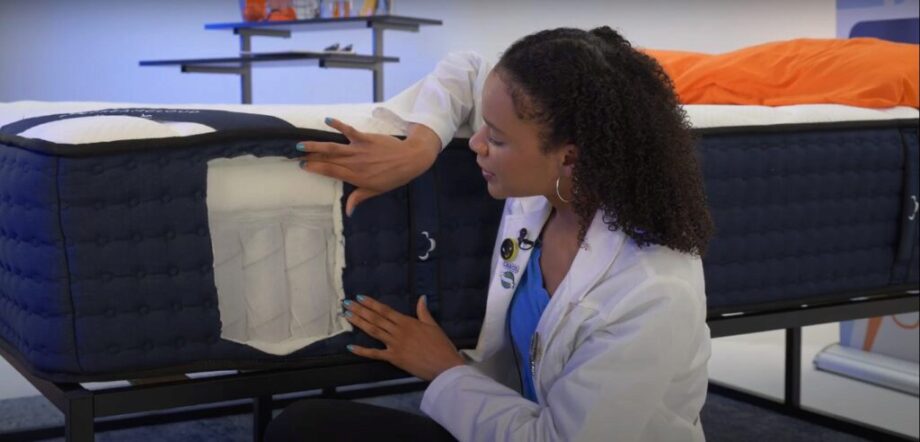
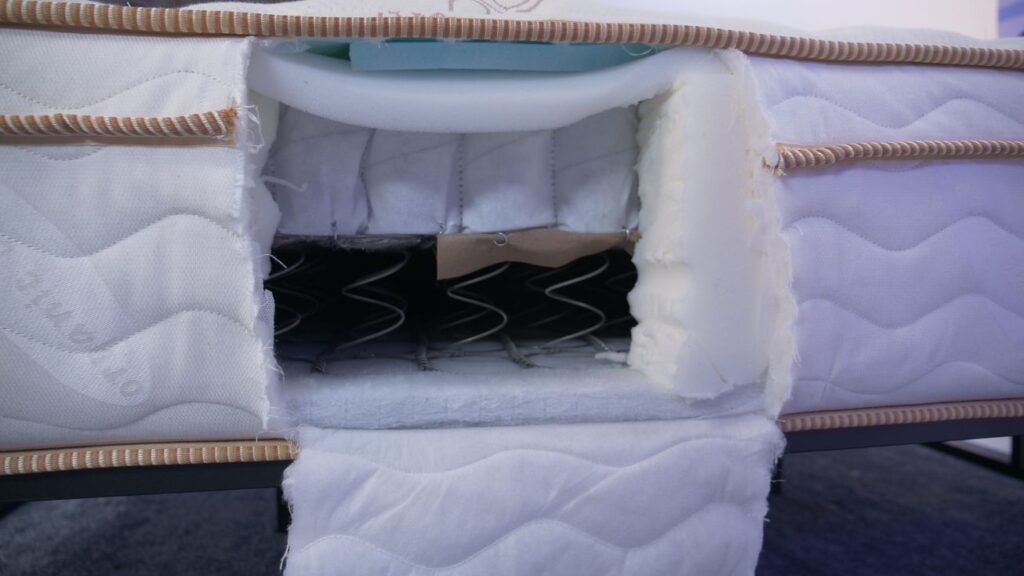
The DreamCloud mattress is wrapped in a cashmere blend cover, while the Saatva has a a euro top layer sewn seamlessly into its organic cotton cover. Cashmere is luxurious and provides a soft, plush feeling. The euro top can feel different depending on thickness, but it’s meant to target pressure relief and provide an antimicrobial layer to block bacteria buildup.
For the DreamCloud mattress, above the base layers, multiple cushioning foam layers provide excellent pressure relief. Specifically, there is a layer of quilted memory foam, then a layer of contouring gel memory foam, and finally a layer of transition foam.
For the Saatva mattress, a lumbar zone support layer sits above the steel coils, and Saatva uses a wire frame and thin memory foam layer in the center third of the mattress to give sleepers extra lower back support. And, above that, is a layer of short pocketed coils. The coils are individually wrapped, so they isolate movement fairly well compared to interlocked coil systems. A plush polyfoam pillow top sits above the coils. This layer is technically a euro top because the layer is sewn seamlessly into the organic cotton cover.
The DreamCloud is anchored by a dense foam layer and supportive coil system. Each of the coils in the innerspring layer is wrapped individually, so you won’t feel as jostled if your sleeping partner moves or changes their sleep position on the other side of the mattress.
Next, the Saatva uses a sturdy steel coil system at its base. These coils support the weight of the mattress and prevent it from sagging. They also allow air to flow through the base layers, which keeps the mattress cooler overall.
|
Size |
DreamCloud Prices |
Saatva Prices |
|
Twin | $839.00 | $1399.00 |
|
Twin XL |
$1089.00 |
$1499.00 |
|
Full |
$1199.00 |
$1999.00 |
|
Queen |
$1332.00 |
$2099.00 |
|
King |
$1669.00 |
$2595.00 |
|
California King |
$1669.00 |
$2599.00 |
For exclusive discounts on both beds see our DreamCloud mattress coupons and Saatva mattress coupons.
If your body tends to run hot at night or you live in a warm climate, you need a mattress that sleeps cool. Hybrid mattresses generally stay temperature neutral, thanks in part to the breathability of their coil layers.
Because the Saatva and DreamCloud are both hybrid mattresses with breathable coils that allow for airflow, they each do a great job of keeping the average sleeper cool. However, because Saatva has fewer foam layers, it’s a more cooling mattress than the DreamCloud.
Motion isolation is one of the most important performance factors for couples and co-sleepers. Mattresses isolate movement by incorporating features that absorb energy before it has the chance to spread. Memory foam mattresses are dense enough to muffle most motion, while innerspring mattresses do the poorest job.
Both of these mattresses earned solid scores for motion isolation, but the DreamCloud is the better option.
Edge support matters if you sleep near the edges of the bed or if you sit on the edge of the bed to get ready in the morning. Often, the best mattresses for edge support have edges reinforced with high-density foam or extra-sturdy coils. Both mattresses in this comparison have dense foam framing the mattress core, so you’ll be well-supported on either.
Pressure relief is an especially important factor for side sleepers since they put lots of weight on their shoulders and sides while they sleep. The multiple foam layers on top of the DreamCloud mattress do a great job of contouring around your pressure points and evenly supporting the weight of your body. The Saatva mattress provides moderate pressure relief, so we think the DreamCloud is much better for side sleepers and those with joint pain.
Just like with bad posture, a mattress with bad back support can cause pain. Your mattress should keep your spine in a neutral “S” shape. Mattresses that push your spine out of alignment often cause shoulder and lower back pain. Fortunately, the Saatva and DreamCloud mattresses both keep your spine aligned, but the Saatva does an even better job than the DreamCloud.
Check out our top picks for the best mattresses for back pain.
Mattress durability is contingent upon several factors. If the mattress is used every day, it’s going to deteriorate more quickly. Also, certain materials last longer than others. For example, latex lasts around eight years on average, while memory foam and polyfoam tend to last around six years.
The Saatva and DreamCloud mattresses both have a durable hybrid construction that we think should last you at least seven to 10 years, and they’re both protected against defects by generous warranties.
The DreamCloud mattress comes with free shipping in 48 states, while deliveries to Alaska and Hawaii cost $150. It’s delivered as a bed in a box to your door.
Also DreamCloud offers a 365-night trial period. If it’s not the right fit, you get free returns or exchanges and a full refund, as long as you keep the mattress for at least 30 nights. Keep in mind, each customer is only allowed one exchange.
The DreamCloud is covered by a Lifetime warranty for the original owner. You are eligible for a free replacement mattress during the first 10 years of ownership, as well as free repairs or replacements after the first 10 years (though DreamCloud will decide whether to repair or replace your mattress).
Saatva gives all of their mattress customers free white glove delivery, which includes shipping, delivery, setup, and old mattress removal. The brand doesn’t ship to Alaska or Hawaii, but residents can arrange for freight delivery.
Per Saatva’s return policy, each mattress comes with a 365-night sleep trial period and free returns or exchanges (minus a $99 transportation fee).
The Saatva Classic mattress is covered by a Lifetime warranty for the original owner. During the first two years of the warranty, you’re eligible for a free replacement mattress, and after, you can have your mattress repaired and re-covered for only $99 for shipping each way.
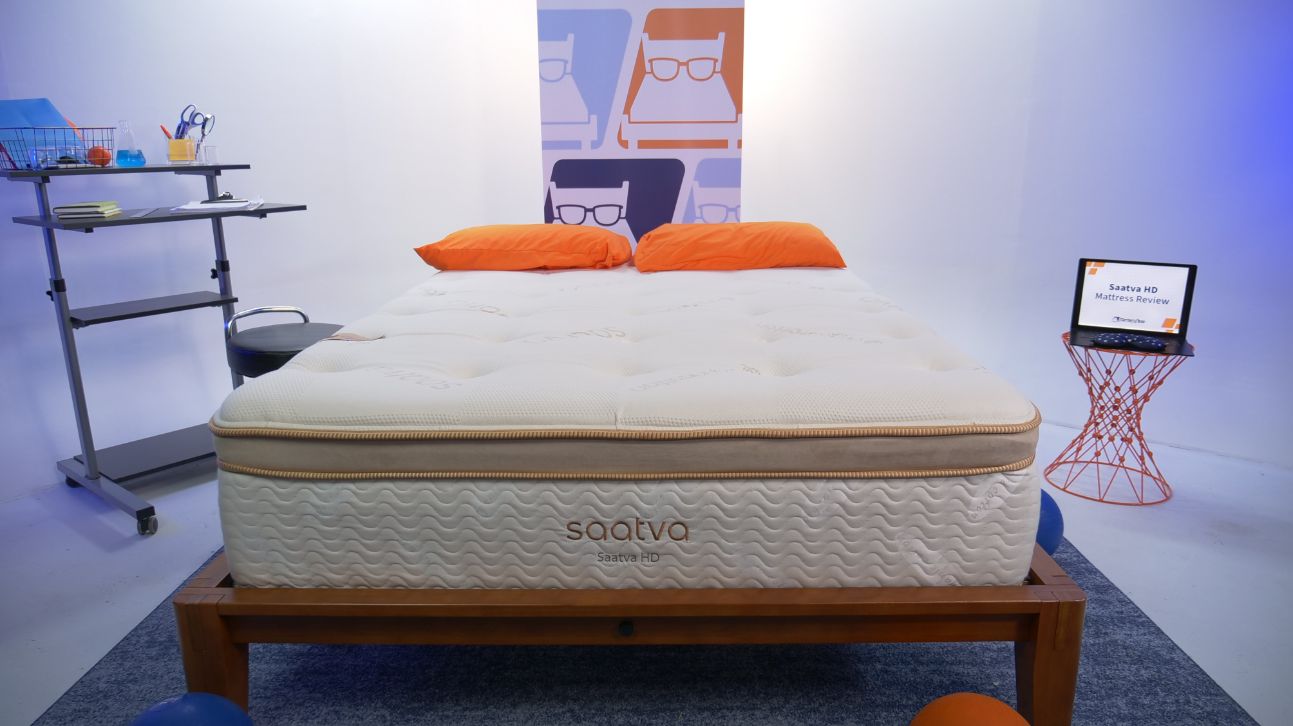
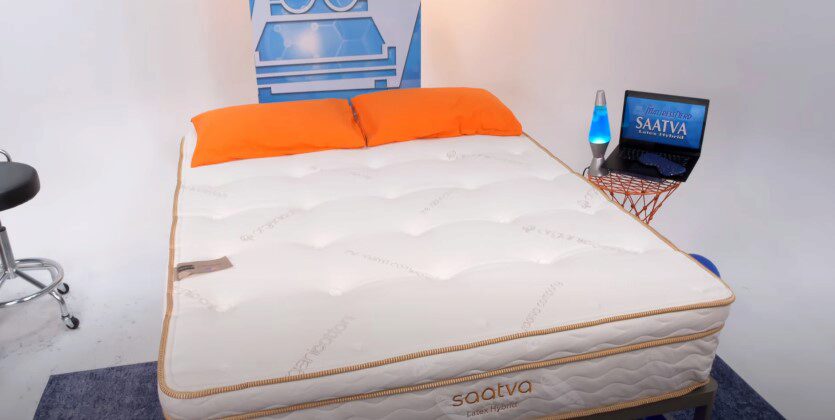
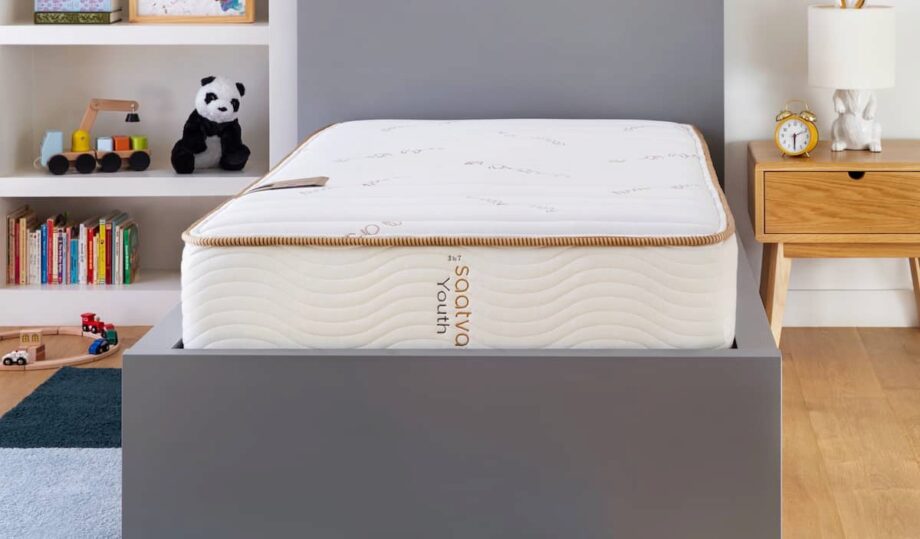
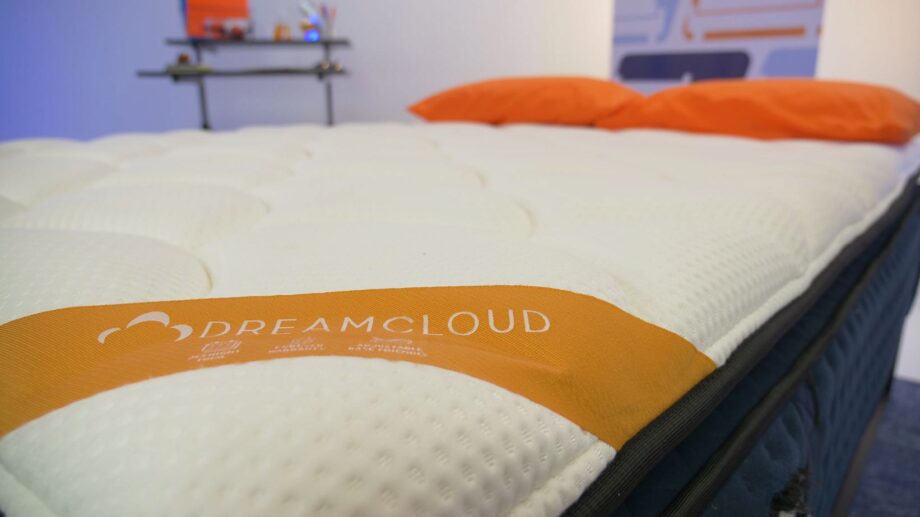
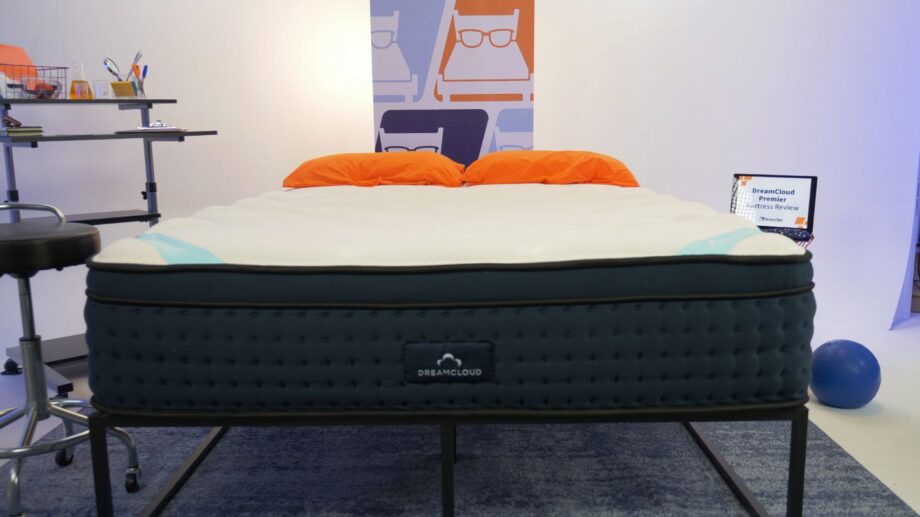
Between these hybrid beds, the Saatva is our pick for hot sleepers, combination sleepers, and those who want multiple firmness options. If you’re a side sleeper, memory foam lover, or have joint pain, the DreamCloud Premier is your better option. Also, we recommend both beds to back and stomach sleepers.
Yes. Specifically, DreamCloud recommends putting your mattress on a platform or bed frame that can hold a mattress that’s 15 inches thick. Also, the company also advises against putting your DreamCloud bed on a plastic base or the floor. Lastly, DreamCloud does offer free white glove delivery and setup too.
Saatva actually uses two layers of coils which is helpful for making the mattress more responsive to sleepers’ movement and more durable as well. For sleepers wanting pressure relief, these two layers of coils also work by targeting areas of the body that need the most support.
No. Saatva mattresses are highly durable and will likely last you more than eight years. This is because Saatva uses quality and organic materials that are meant to last. Also, Saatva mattresses feature a strong steel coil support system and solid edge support that will keep your bed from warping.